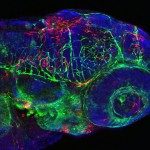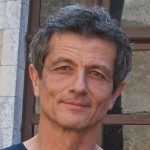Link to Pubmed [PMID] – 6292462
J. Virol. 1982 Sep;43(3):800-8
Three new polyoma mutants were selected for their ability to grow on the embryonal carcinoma cell line F9. These mutants share in common an insertion of two nucleotides, a thymine and an adenine, in the noncoding region located on the late side of the origin of replication. We have found that these insertions exist in all of the other polyoma virus mutants able to grow on F9 cells (Fujimura et al., Cell 23:809-814, 1981; Katinka et al., Nature (London) 290:720-722, 1981; K. Sekikawa and A. J. Levine, Proc. Natl. Acad. Sci. U.S.A. 78:1100-1104, 1981). The region containing these insertions could be folded into a stable secondary structure which included a guanine plus cytosine (G + C)-rich stem. The adenine and thymine were inserted in such a way that they maintained the palindrome in the G + C-rich stem and were complementary in the putative secondary structure that we present here. Another class of polyoma virus mutants selected on a multipotential carcinoma cell line (PCC4-Aza) were characterized by a more complex rearrangement (deletion and duplication) which occurred in the same region. This arrangement preserved the G + C-rich palindrome and also yielded a sequence which still allowed the folding of another type of stable secondary structure. The significance of these findings is discussed.


